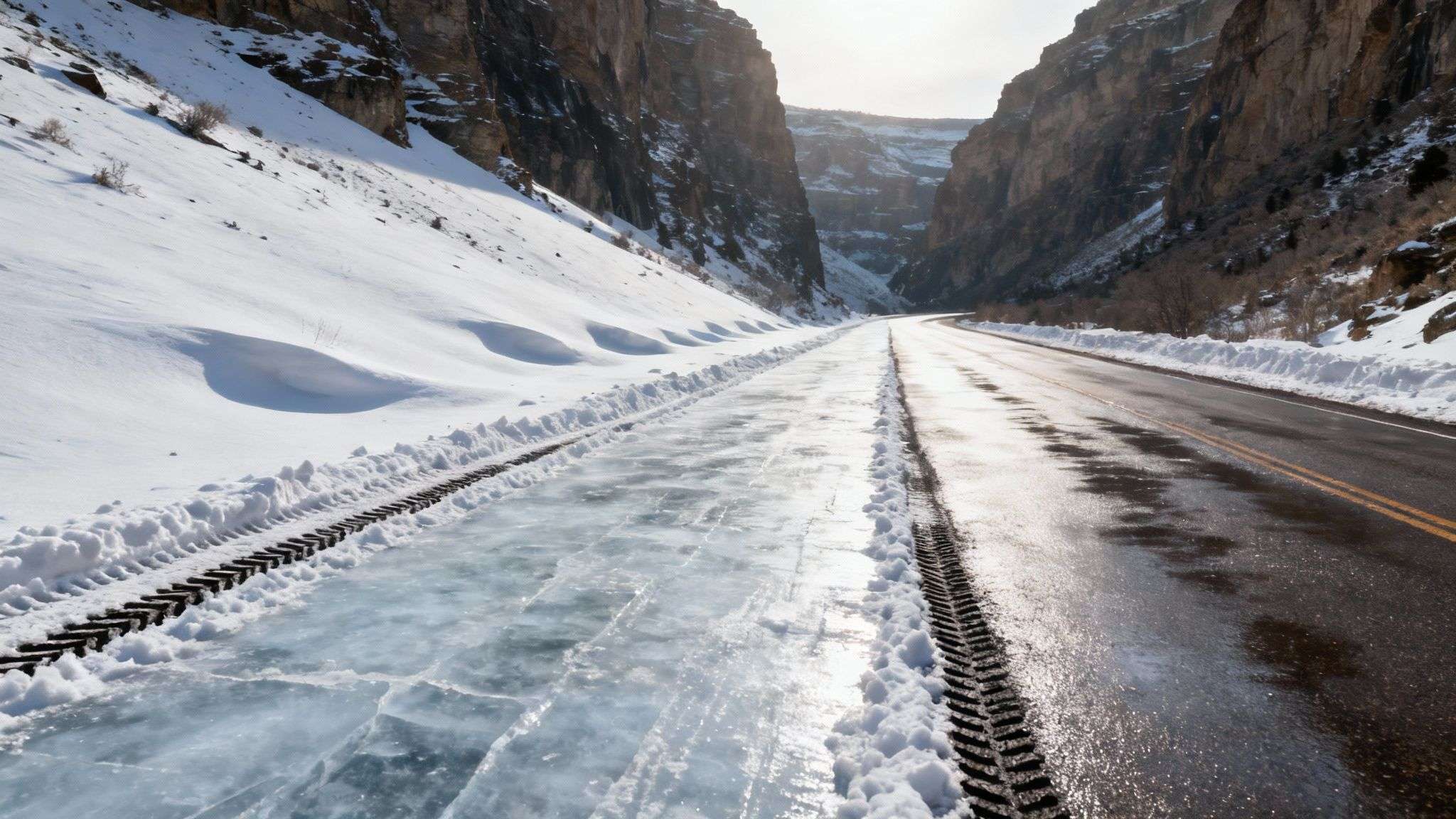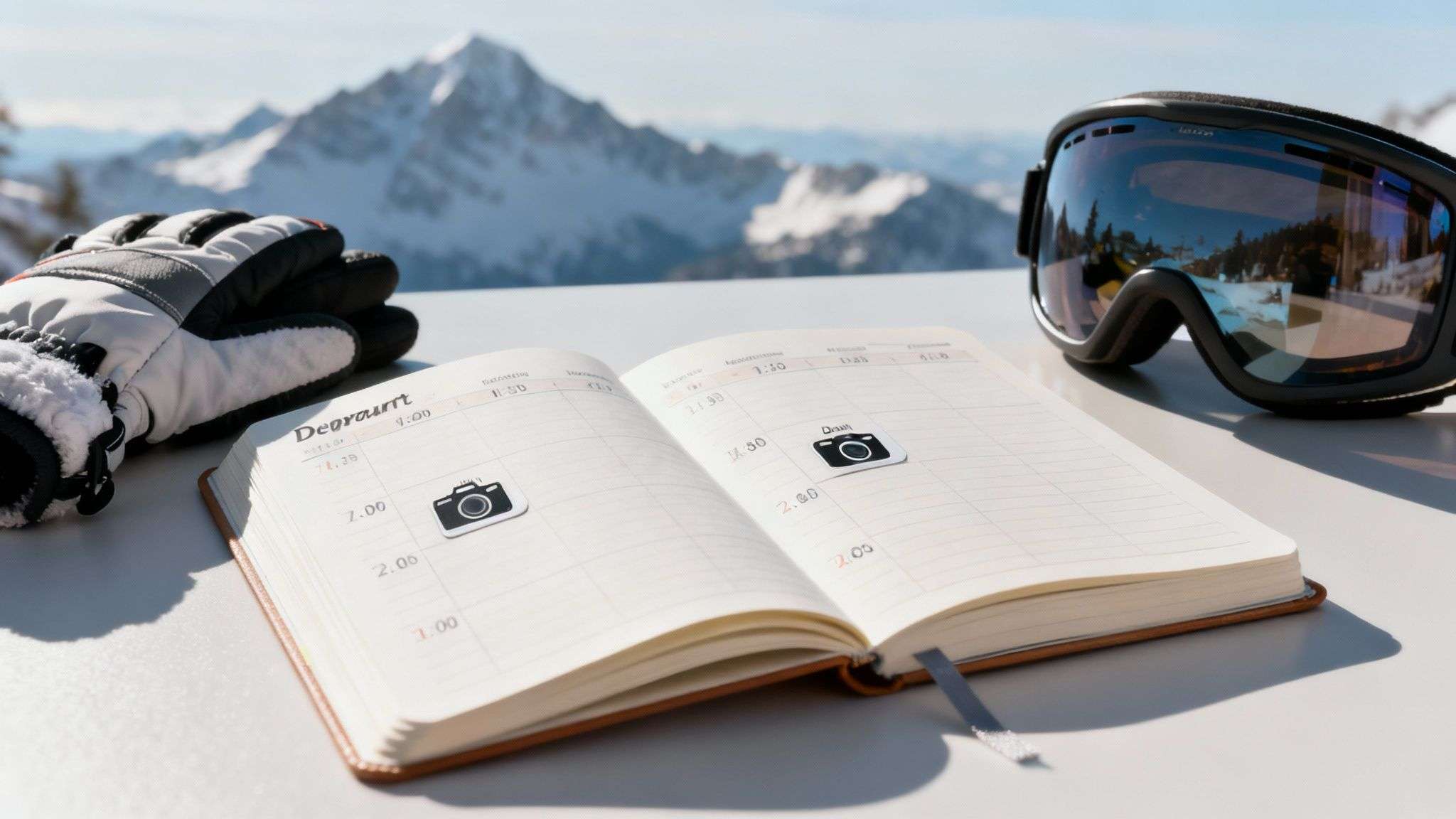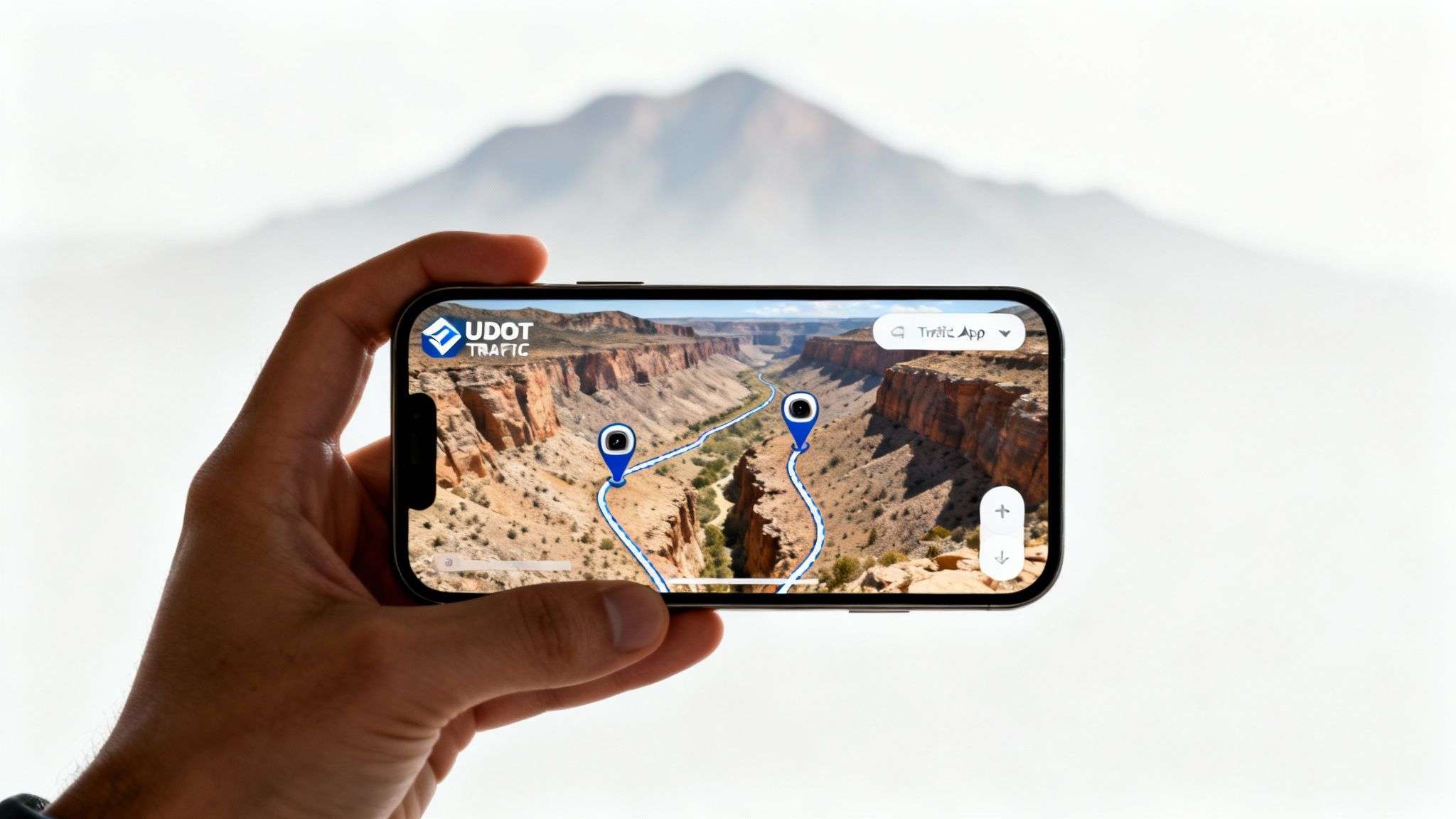How to Use Traffic Street Cameras for Your Canyon Trip
Learn how to use live traffic street cameras from UDOT to check road conditions, spot backups, and plan your ski trip to Little and Big Cottonwood Canyon like a local.
Wondering what the roads actually look like in Utah's canyons? Live traffic street cameras are your best tool for seeing real-time road conditions and traffic flow before you leave home. This guide explains what to look for on camera feeds, how to find the most reliable sources, and when to check them for a smoother trip to the mountains.
What Are Traffic Street Cameras?
Traffic street cameras are live feeds managed by the Utah Department of Transportation (UDOT) that provide a real-time, ground-level view of road conditions. Unlike a weather app or a traffic map, these cameras show you exactly what's happening on the road, from fresh snow and icy patches to the dreaded "red snake" of taillights heading up Little Cottonwood Canyon (LCC) and Big Cottonwood Canyon (BCC). They are an essential tool for making smart travel decisions.

Why Camera Feeds Are Essential
A quick camera check can be the difference between a great powder day and a frustrating morning stuck in gridlock. By looking at a live feed, you can:
- See the Road Surface: Is it plowed and wet, or is it a sheet of ice? This tells you whether your car and tires are up for the job.
- Gauge Traffic Flow: You can instantly see if cars are moving smoothly or if they’re already bumper-to-bumper.
- Spot Trouble Early: Cameras often show the first signs of a spinout or accident long before an official alert is posted.
- Check Weather's Impact: You can see exactly how falling snow is affecting visibility and accumulating on the road right now.
Local Tip: Don't just check the camera at the canyon entrance. I always look at a few key spots further up—like the chain-up areas or notorious switchbacks—to get a complete picture of what I’m driving into.
When Should You Check Traffic Cameras?
When you check the cameras is just as important as what you see. Your timing should match your goal for the day.
- For First Tracks (5:00 AM - 6:00 AM): This is your critical window to check overnight snow, see if plows have been through, and spot early signs of avalanche control work before the main rush begins.
- For a Mid-Morning Trip (8:00 AM - 10:00 AM): Start checking around 8:00 AM to watch the initial traffic wave build. Keep an eye on the feeds to pinpoint when that first rush breaks up, usually between 9:30 AM and 10:00 AM, which is your ideal window to head up.
No matter when you go, your final camera check should be the last thing you do before walking out the door. Conditions in the Wasatch can change in minutes.

How to Check and Interpret Traffic Cameras
Pulling up a camera feed is the first step; knowing how to read it is what gives you an edge. Use official sources and look for subtle clues to understand what your drive will really be like.
How to Find Reliable Camera Feeds
Go straight to the source: the official UDOT Traffic website or the UDOT Traffic mobile app. Third-party sites often show outdated, cached images, which can be dangerously misleading. On the UDOT map, zoom in on SR-210 (LCC) or SR-190 (BCC), filter the view to show only "Cameras," and click the icons to see the live feed. Always check the timestamp on the image to confirm it's current.
Our complete overview of the UDOT traffic cameras has a detailed guide on navigating the map and finding specific camera locations.

What to Look for on Camera Feeds
- Road Surface: Look for the difference between a dark, wet road and the glossy shine of black ice. Check tire tracks—sharp tracks mean good traction, while smeared tracks suggest slick, packed snow.
- Traffic Flow: A long, unbroken chain of red brake lights means traffic is stopped. This is the "red snake." Gaps between cars followed by tight clusters can signal a bottleneck from an accident or checkpoint up ahead.
- Visibility: If distant trees or signs look fuzzy, visibility is poor due to fog or blowing snow. Plumes of snow blowing off passing cars indicate high winds and potential whiteout conditions.
For more on traffic patterns, our Little Cottonwood Canyon traffic guide breaks down the most common choke points.
Combine Cameras with Other Data
Live cameras are powerful, but they are just one piece of the puzzle. For the complete picture, cross-reference what you see with other live data. Wasatch Roads integrates data from UDOT, resorts, and weather services to provide a comprehensive view.
Before you go, always check:
- UDOT Traffic Alerts: The official @UDOTTRAFFIC feed on X (Twitter) provides text-based updates on closures, accidents, and traction law enforcement.
- Resort Snow Reports: Check your destination's report for on-the-ground snow totals, which helps you verify what you're seeing on camera.
This holistic approach, combining visual data from traffic street cameras with official alerts, is the surest way to guarantee a smoother and safer day in the canyons.
FAQ: Traffic Street Cameras
How often do the UDOT camera images refresh?
Most official UDOT traffic camera images refresh every few minutes. Critical locations, like canyon entrances, often update more frequently. Always check the timestamp printed on the image to ensure you're looking at current information.
Can I tell if the traction law is in effect from a camera?
Not directly, but the camera provides strong clues. Look for flashing electronic signs at the canyon mouth, the presence of law enforcement checking tires, or a road surface that is obviously snow-covered or icy. However, always confirm the official status on the UDOT Traffic app or the @UDOTTRAFFIC X (Twitter) feed.
What if a key camera is blacked out?
If a camera is offline, check the cameras immediately before and after it on the route to piece together the situation. Also, refer to the UDOT Traffic app for map-based speed data and check the @UDOTTRAFFIC feed on X (Twitter) for real-time text alerts from road crews.
At Wasatch Roads, our goal is to provide you with the data you need for a safer, less stressful trip into the mountains. By learning to use live traffic street cameras effectively, you can make smarter decisions and spend less time in traffic. Plan your next adventure with our live data at https://wasatchroads.com.